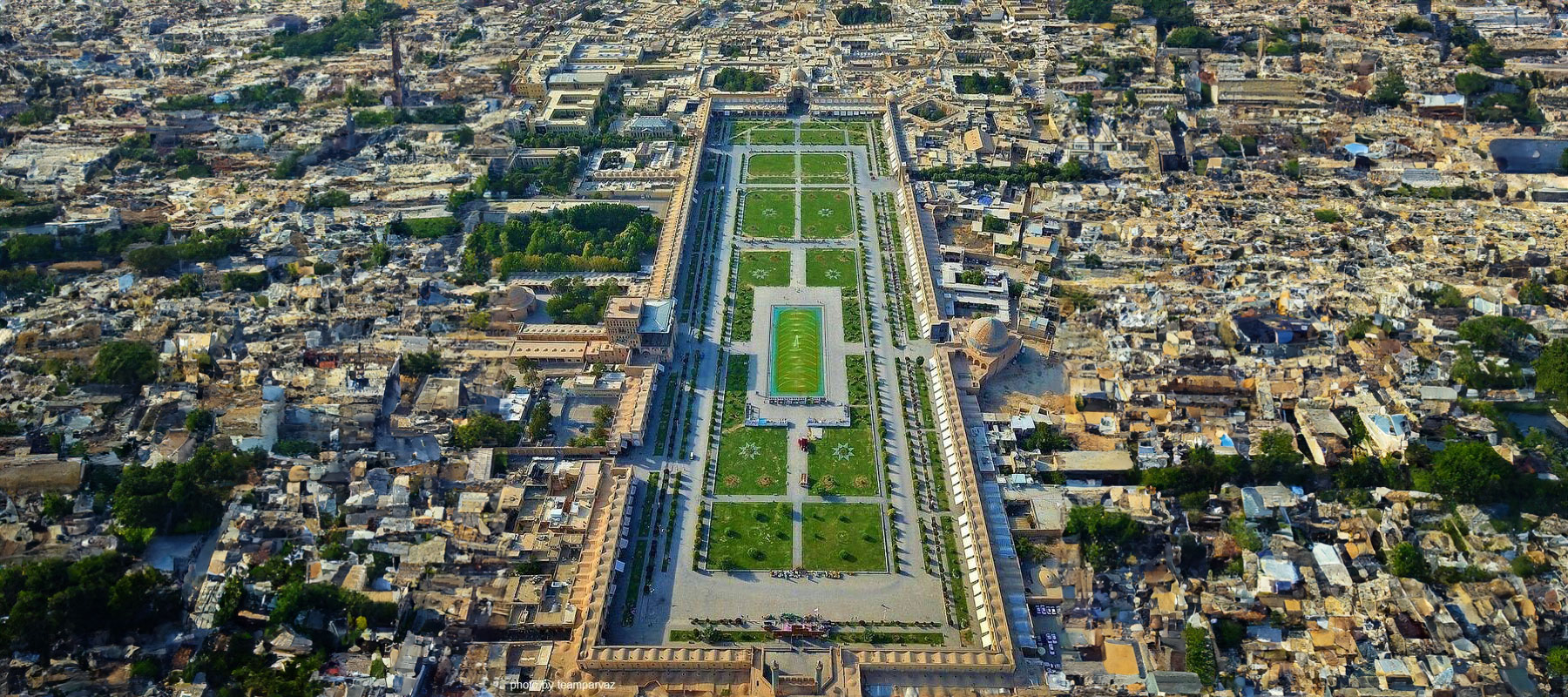
The Khajo Bridge
The Khajo Bridge stands as a captivating testament to Isfahan's rich history and allure. Your visit to Isfahan would remain incomplete without experiencing this remarkable landmark firsthand. While you might have seen countless images of Khajo Bridge , nothing quite compares to the pleasure of standing before it, especially considering its enigmatic reputation. To embark on this unforgettable journey, all it takes is a plane ticket to Isfahan and a desire for a delightful adventure.
A Glimpse into the Magnificence of Khajo Bridge
Ranked among the most exquisite bridges in Isfahan, Khajo Bridge spans the Zayandeh River. Located east of the thirty-three bridges, its architectural brilliance radiates like a jewel. Commissioned by Shah Abbas II Safavid, it was constructed atop the remains of the Timurid-era Hasan Beyk Bridge. Over time, this bridge underwent both construction and restoration under the Turkmens, eventually attaining its pinnacle during the Safavid era. Revered for its unique design and adorned with intricate tile decorations, Khajo Bridge proudly holds a place as one of the world's most beautiful bridges.
.jpg)
Discover the following topics in this engaging article:
- Unsaid things about the Khajo Bridge of Isfahan
- How to reach Khajo Bridge in Isfahan?
- What other places of interest can be visited near Khajo Bridge in Isfahan?
- What hotels are there to stay near the Khajo Bridge in Isfahan?
- What restaurants and canteens are near Khajo Bridge , Isfahan?
1. Unsaid things about the Khajo Bridge of Isfahan
Khajo Bridge was built in the Safavid era and its building consists of four floors with tiled work. Visiting during spring, when the Zayandeh River swells, presents an awe-inspiring panorama that draws visitors to admire its beauty. Nestled at the bridge's center is the Biglerbigi building, once the temporary residence of the king and the royal family. Historically, this bridge served as a thoroughfare, a royal retreat, and even as a dam.
.jpg)
Unveiling Secrets and Wonders
Shah Abbas Zoroastrians were the masterminds behind this bridge, strategically shortening their journey across the Zayandeh River. In a fascinating spectacle, Shah Abbas designed a residence for himself and his family at the bridge's midpoint. Over time, it evolved into a hub for recreational activities like rowing races. The bridge underwent restoration during Naser al-Din Shah Qajar's reign in 1290 AH, further solidifying its legacy.
Khajo Bridge 's dimensions have shifted through history, leading to variations in recorded measurements. The spectacle of sunset from this bridge is a true delight, accompanied by musical performances that cater to all age groups. Occasionally, the bridge is adorned with mesmerizing 3D lighting displays, enhancing its visual grandeur.
A Resilient Legacy
An intriguing feature of Khajo Bridge lies in its foundations, which thrive on contact with water, paradoxically growing stronger. Adorning the eastern corners are stone lions, symbolic of the Bakhtiari troops and Isfahan's guardians during the Safavid era. Near the lion statue on the northern side, a sun-shaped qibla view adds an extra layer of fascination.
Unearthing the Enigma
Hidden within Khajo Bridge 's architecture are captivating secrets. Positioned on the lower level is a candle formed from the intersection of three-dimensional space, where the back and front walls meet. The bridge's structure, when viewed from above, resembles an eagle with outstretched wings, soaring above the Zayandeh River. Each floor echoes the image of eagle feathers, while the second floor's projections mimic an eagle's head. Excavations conducted during restoration unveiled ancient tombstones and an assortment of intricately carved stone slabs adorned with cryptic symbols.
2. Reaching Khajo Bridge offers multiple avenues:
By Bus: Choose buses halting at Khajo Bridge station, connecting Kamal Ismail Street and Ayanekhane Boulevard. A short stroll from Kamal Ismail Street leads to the bridge's entrance.
By Metro: The nearest metro station is Si-Sa Pol Station, approximately 2 kilometers away. After alighting, a taxi ride is required, leading to the bridge's entrance from Ayane Khaneh Boulevard.
.jpg)
3. Extend your adventure by visiting these attractions:
Isfahan Flower Garden: 1.4 km
thirty-three bridges of Isfahan: 2.6 km
Naqsh Jahan square, Isfahan: 2.8 km
Chehelston, Isfahan: 3.2 km
Hasht Behesht Palace: 3.8 km
4. Several hotels await your stay near Khajo Bridge :
Abbasi Hotel Isfahan: 2.8 km
Isfahan Star Hotel: 2.8 km
Isfahan Tourist Hotel: 3 km
Isfahan Traditional Hotel: 3.6 km
Delightful Culinary Encounters
5. Indulge in delectable meals at these restaurants and canteens:
North Shahr Restaurant: 1.9 km
Zima Vegetarian Restaurant: 2.7 km
Shahrazad Restaurant: 3 km
Naqsh Jahan Restaurant: 2.9 km
Hermes Cafe Restaurant: 3.9 km
Preparation for Your Isfahan Adventure
Preparation for Your Isfahan Adventure
Before setting forth, we recommend perusing our comprehensive travel guide to Isfahan, ensuring an informed and gratifying journey. Experience the allure of Khajo Bridge and unlock the secrets woven into its captivating architecture.
Ready to make your Isfahan visit unforgettable? With QAAPH, you can not only discover the rich history of Khajo Bridge but also book your ideal hotel stay hassle-free. But that's just the beginning – we offer more than accommodation.
Experience the convenience of pre-arranged transportation services, ensuring you reach Isfahan's hidden gems effortlessly. Concerned about language barriers? Our skilled translators are at your service to enhance your interactions with the local culture.
Your adventure in Isfahan awaits. Embark on a memorable journey with QAAPH today!
Related Blog
03 Aug 2023 | Travel in Isfahan
Aali Qapu Mansion: Isfahan's Regal Architectural Marvel
Ali Qapu: Historical palace in Isfahan, Iran. Its grand architecture, intricate ...
07 Aug 2023 | Travel in Isfahan
Naqsh-e Jahan Square: A Glimpse into Isfahan's Rich Heritag
Naqsh-e Jahan Square in Isfahan provides a captivating glimpse into the city's i...
08 Aug 2023 | Travel in Isfahan
The Khajo Bridge: A Historical Marvel That Beckons
The Khajo Bridge, a mesmerizing historical wonder, calls out to history enthusia...


Comments
Total 0 comment in the post